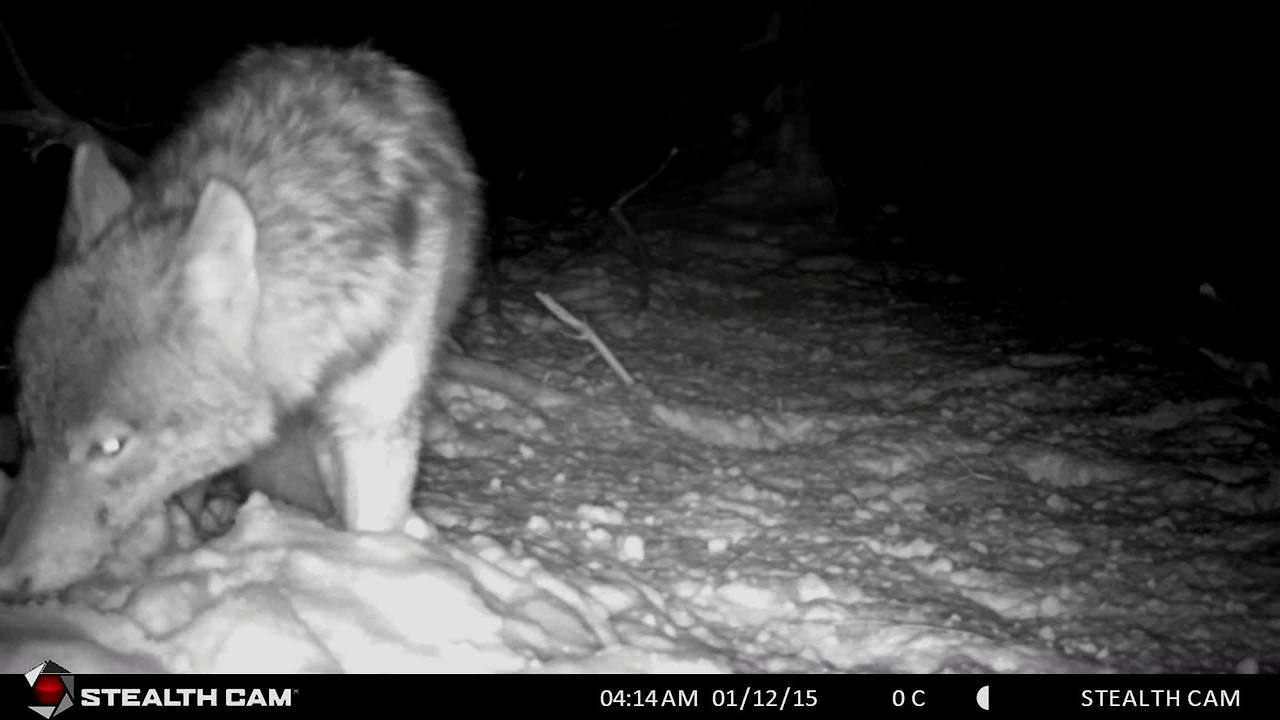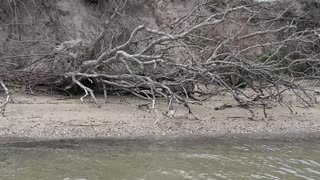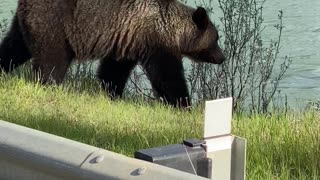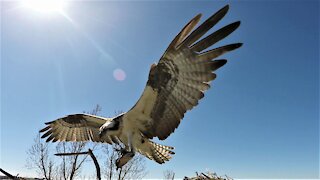Premium Only Content

Large Wild Wolf Searching For Food In The Deep Snow
A large Eastern Canadian wolf, also called an Algonquin wolf, was found digging in the snow at an old deer-kill site hoping to recover a morsel or two. Each wolf needs about 25 square miles to acquire enough food to live. So having one, at night, look directly into this trail camera was extreme good fortune and a wondrous occasion. This video was filmed of completely wild wolves.
These type of wolves can be seen in the North American great lakes and also in southeastern Canada. The eastern wolf is a lightly-built, grey colored animal that likes to hunt deer. The eastern wolf's fur is typically based of a mix of gray and brown coloration with lighter parts.
The algonquin wolf primarily targets small or sometimes medium-sized prey. The diet of such wolf is composed of white-tailed deer and beaver, unlike the gray wolf, the algonquin wolf is not made to hunt larger or more dangerous animals like a caribou, an elk, a moose or a bison.
The average territory ranges between 110–185 km² and the age of dispersal for eastern wolves is 15 weeks, which we would like to point that it is much earlier than their cousins the gray wolves. Each wolf needs about 25 square miles to acquire enough food to live and have a territory large enough to not be fighting for territory or other reasons such as good quality of life. So having one, at night, look directly into this trail camera was extreme good fortune and I wanna say that because of the night vision camera we were able to see this happening.
This video was filmed in a perimeter that only contains wild wolves and other wild animals. No compounds, zoos, or enclosures could have been found for miles around. A wolf is a wild animal and it must not be tamed to be domesticated or used as a pet. Wolves are not meant to be kept inside and are illegal to keep as a pet in many states!
Enclosures and zoos have to follow strict rules to be allowed to have such wild animals. A wolf is animal that likes to be with his pack but he is often kept per one in zoos. This animal could be a threat to humans, especially if released in a residential area, since the early 1970s, incidents have been reported, with attacks of algonquin wolf, bold or aggressive behavior towards humans in Algonquin Provincial Park.
During a 9 year period, more precisely from 1987 to 1996, a total of four attacks have been counted of algonquin wolves biting people. The worst that has been seen was a serious case in 1998, when a male wolf that was seen around humans, not scared or bothered about their presence, attacked later a 1 and a half year old boy that was playing in a garden in front of his parent’s house. This attack on the little baby boy lead to causing several puncture wounds on his chest. After the animal was captured and killed during the investigation that followed the attack, it was reported that the wolf responsible of the attack was not carrying rabid.
Wolves are wild animals and need to be handled with care! Be careful at all times if are ever near one!
-
 1:36
1:36
ViralHog
4 years ago $0.16 earnedBobcat Swims Between Islands Searching for Food
7155 -
 0:15
0:15
alliburchardt
4 years ago $17.89 earnedWild fox hunting for shrews pounces through the snow
5.08K3 -
 0:24
0:24
ViralHog
4 years ago $0.03 earnedLarge Moose in Road Doesn't Want to Move
6662 -
 0:54
0:54
ViralHog
5 years ago $19.63 earnedLucky Man Encounters a Large Wolf Pack
44.9K -
 0:39
0:39
ViralHog
5 years ago $1.48 earnedLarge Grizzly Bear Climbs onto Airplane
11.3K3 -
 0:40
0:40
ViralHog
5 years ago $0.13 earnedLarge Grizzly Calmly Crosses Bridge
1.89K -
 0:23
0:23
ScubaToad
5 years ago $11.64 earnedLarge gathering of sharks swim around wreck
1.93K2 -
 2:22
2:22
ViralHog
5 years ago $0.65 earnedRescuing a Moose Stuck in Deep Snow
9.3K -
 1:37
1:37
WildCreatures
4 years ago $5.78 earnedNest camera captures fish eagles fighting over a large catfish
8.18K8 -
 0:55
0:55
ViralHog
5 years ago $0.27 earnedLarge Moose Angles Antlers to Squeeze Through Gate
1.77K2